Tides of change: From fighting against the seas to living with it - How the Netherlands keeps itself dry
As Singapore looks to develop initiatives to deal with rising sea levels brought on by climate change, CNA visited the Netherlands, which is a global leader in designing systems to keep rising waters at bay.

Windmills seen at Zaanse Schans in the Netherlands. (Photo: Tang See Kit)
AMSTERDAM, Netherlands: More than 66 years on, it is still remembered and referred to as the “national disaster”.
In the wee hours of Jan 31, 1953, a ferocious storm from the North Sea broke through the dykes protecting the south of the Netherlands, overwhelming the low-lying coastal cities and catching many unprepared. A second storm inundated the area again the next day. The ensuing floods killed nearly 2,000 people.
Arno Vloet was born 11 years after the catastrophic natural disaster, but he remembered vivid stories from his uncle – a military man involved in the rescue operation back in 1953.
READ: Tides of change - Amid rising sea levels, the Dutch float new initiatives with farms and more homes on water
READ: Fending off the floods – 5 things to know about polders and how they could work in Singapore
“The army sent in lots of boats, sandbags and tried to rescue as many people – some were waiting for help on the roofs of their houses – but many died,” said the 55-year-old businessman.
“We learnt about this national disaster in school. For a small country like us, this is a part of our history, like the Second World War.”
Surrounded on one end by the North Sea and with three of Europe’s major rivers – the Rhine, Meuse and Scheldt – running through the country, about two-thirds of the Netherlands is vulnerable to flooding.
For centuries, the Dutch have built dykes, canals, windmills and pumps to keep the water out. In doing so, they created polders – which are areas of reclaimed land that lie below sea level – out of previously unusable waterlogged areas.
What happened in 1953 was a wake-up call, said Tjitte Nauta, an expert from Dutch water research institute Deltares.
“At that time, it appeared that our water management wasn’t as good as we thought. The levees were not at the right levels and maintenance wasn’t ideal,” he said.
From there, the country ramped up its flood defences, spending billions over the next few decades.
Now, in one of the world’s most flood-prone countries where nearly 70 per cent of economic output is generated below sea level, it almost never floods.
Part of this formidable fortress is the Delta Works – three locks, six dams and four storm surge barriers developed in the country’s southwest between 1954 and 1997. Storm surge barriers are massive, moveable structures which shut, automatically or otherwise, during extreme sea levels.
The last part of the Delta Works to be completed was the Maeslantkering or Maeslant Barrier, which can withstand a storm tide of 5 metres above sea level and serves as the first line of defence for the city of Rotterdam.
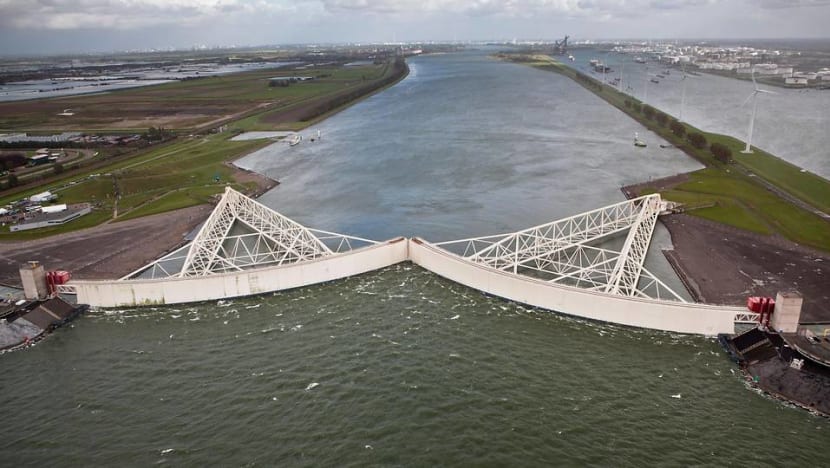
The biggest, however, remains the 9-kilometre long Oosterscheldekering, or Eastern Scheldt Barrier. It closes when water levels are estimated to rise beyond 3 metres.
Constructing these 13 massive flood defence structures cost 7.4 billion euros (about S$11.2 billion), according to Minister of Infrastructure and Water Management Cora van Nieuwenhuizen.
“If you realise that one third of our country is below sea level and another third is at the risk of flooding, then you immediately realise why it’s always on our minds,” she told CNA in a recent interview.
“But in the past, we had some floods and people lost their lives. 1953 was a horrible disaster and that was the reason for us to start the Delta Works.
“We spent a lot of money to prepare ourselves for the future and make sure we are resilient for storms like that,” the minister added.

TURNING POINT
But while the Netherlands reinforced protection along its coasts, trouble was emerging elsewhere.
Mr Vloet, who lives in a small town in the south that is three metres below sea level, said he has never experienced a flood except for a close encounter in 1993, when the nearby Nijmegen city faced a flood risk from the Rhine.
The powerful river, one of Europe’s longest, carries melted snow water from the Swiss Alps and flows through four other countries before cutting through the Netherlands to get to the North Sea.
“My town had no problems but a relative living in another area had to evacuate. They called us and we went over to help move the furniture to the second floor,” recalled Mr Vloet.
The Rhine threatened to overspill again two years later when heavy rainfall in France and Germany sent a surge of water toward Nijmegen. Amid worries that the city’s dykes could be breached, more than 200,000 people were evacuated.
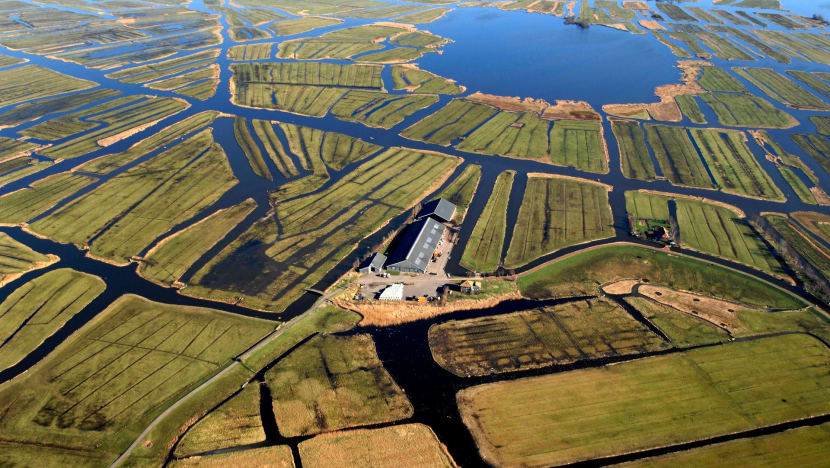
Fortunately, the dykes held up but the close shave was the second “wake-up call” for the Netherlands.
“Another wake-up call and this time related to urban development,” said Mr Nauta from Deltares.
Growing cities like Nijmegen were encroaching into waterways, while climate change is increasing river discharges, he explained. In the case of the Rhine, faster melting glaciers in Switzerland are set to raise water levels in the river.
“Without enough space, water can only go up which means dykes will also have to go up. But there’s an end to that process,” added the expert who oversees Deltares’s research and commercial projects in Asia.
That paved the way for the country’s second national project in 2008, one that reversed centuries of Dutch tradition. Called Room for the River, it involved the removal of polders, relocation of dykes and the lowering of flood plains along rivers at 30 spots across the country.
“What we used to do is to only come up with technical solutions like dykes to keep the water out,” said Minister van Nieuwenhuizen.
“With climate change, (the risk of flooding from the rivers) is getting worse and we didn’t want to fight that by only building higher dykes. We followed the flows and identified more spaces alongside the rivers, so that when the river is high, you can make use of these areas.”
One of the most complex developments was to resolve a “bottleneck” in the Rhine between the city of Nijmegen and the village of Lent.
This referred to a narrow bend in the river, bounded by the expanding city in the south and a dyke up north that shielded the village. It was only 400 metres wide, compared to other parts of the river that ranged from 1,000 to 1,500 metres, according to Dutch firm Royal HaskoningDHV which was involved in the project.

“Our goal is to relocate the dyke and give more room to the river,” said project manager Gert-Jan Meulepas.
But this meant that 50 homes in the area had to be relocated. “It was not a fun news to bring to the people and we had a lot of opposition,” recalled Mr Meulepas, who said this was the biggest challenge for him and his team.
Royal HaskoningDHV sought to involve residents affected by the re-development early on in the project. Residents also received compensation from the government.
“We had to find a way to make people enthusiastic so we reached out to them to talk about climate change and had awards for people to submit ideas. We wanted to involve them, get them to think about what they want in the area and incorporate these ideas into the project," said Mr Meulepas.
When the redevelopment was completed in 2016, the dyke had been moved up north by 350 metres. This gave way to a new 3.5-kilometre-long canal, and an artificial island called Veurlent for new recreational areas and residential developments.
On one recent afternoon when CNA visited, a festival was happening on the island. Many locals could also be seen swimming in the river, cycling and taking leisure afternoon walks.
“This is the new way – we learn not just to fight nature and fight the water, but also to make use of it and live with it” said Minister van Nieuwenhuizen.
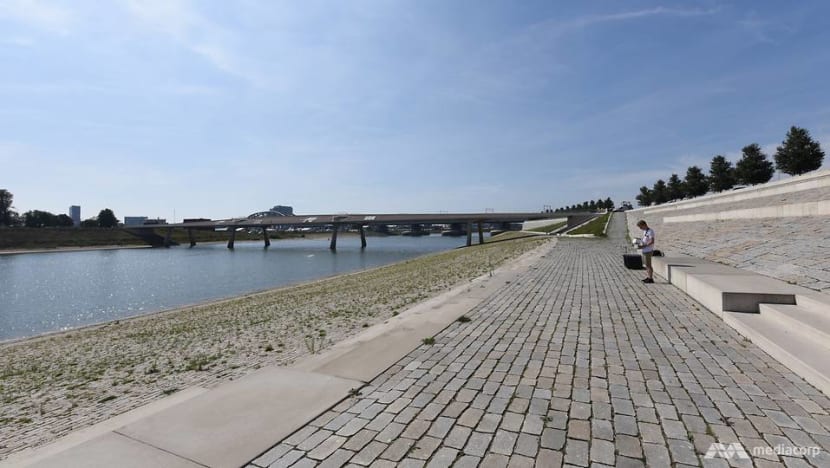
The Room for the River project came with a price tag of 2.1 billion euros. The shift to “building with nature” also gave birth to other initiatives, such as the building of mangrove swamps as buffers against the sea and a 70 million euros pilot project called the “Sand Engine”.
For the latter, 21.5 million cubic metres of sand was placed along a southern coast in 2011. Unlike typical dredging activities, the aim is to let nature do its work by slowly blowing and washing the sand along the coast, eventually developing 35 hectares of new beach and dune surfaces as a reinforcement for the Dutch shoreline.
MAKING CITIES RESILIENT
The search for new ways to beef up flood resilience has also extended into the cities, according to the Dutch minister.
“We have places that are usually a nice public square for people to walk or sit but in times of high water levels, it becomes a collection pond,” she said.
“If you are in a very low-lying place, you have to make sure there are alternatives to get rid of the water.”
These urban solutions are evident in Rotterdam, one of the major low-lying cities that power the Dutch economy.
Apart from public squares that help to store water during heavy rainstorms, there are also parking garages in the city that double up as emergency reservoirs, green roofs and ongoing experiments with climate-adaptive buildings.
“Every city with a water problem is making its own plans, but Rotterdam is probably the one that experimented the most,” said Mr Nauta, who used to be a member of the city’s water board.
Water boards take charge of regional waters such as canals and polder waterways, while the Rijkswaterstaat, the executive branch of the Ministry of Infrastructure and Water Management, manages major waters like the sea and rivers.
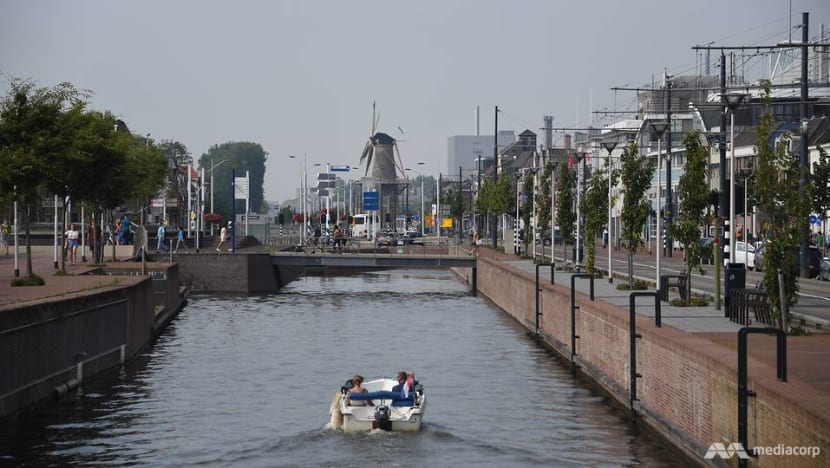
After decades of being flood-free, the risk of swelling water levels is no longer at the top of peoples’ minds, said Minister van Nieuwenhuizen.
“I think if you ask any Dutch if they live below the sea level, a lot of people wouldn’t even wonder about it,” she said.
“But with climate change, we have to educate people and tell them that more extreme weather and rising sea levels are happening. We really have to be prepared.”
There is an official website for people to check if their neighbourhoods are below sea level and by how much, as well as monitor daily water and weather conditions. The website, however, is hardly used by those that CNA spoke to.
Amsterdam resident Jamal Ben Ali said: “Where I stay is below sea level but no, my friends and I never worry about floods.”
Back in Nijmegen, Mr Vloet echoed that the risk of floods has never crossed his mind.
“There was a movie last year about how if the dykes break, half the country will be flooded, even in Nijmegen. That is what could happen in a worst case scenario but I’m not worried,” he said. “I don’t think a lot of Dutch people are concerned too.”
“We have faith in our dykes and sluices. Even our King (Willem-Alexander) is an expert in water management,” he quipped.
IS IT ENOUGH?
To be sure, there are some who wonder if what the country has done will be enough.
“If sea levels rise slowly, we will have time to adapt but what if it rises faster than expected? There’s so much uncertainty,” said Associate Professor Mick van der Wegen from the IHE Delft Institute for Water Education.
“The question hence will be how long our strategy is viable and how long, for example, can we maintain our polders? There will come a day when maintaining our dykes will become too expensive,” he added.
The Netherlands is also facing the problem of land subsidence – shrinking and consolidation of land – especially in the country’s peat-rich land areas.
“If you pump out water, the peat oxidises and becomes smaller. That means the land goes down,” explained Mr Nauta. “Peat and polders are unfortunately not the best combination.”
Climate change has also appeared to play a role in accelerating subsidence, with relatively warm summers dehydrating peat soil and speeding up land shrinkage.
“So our ground is going down and the sea level is going up, which means we have to pump more and more water out – how long can you do this? That is the question,” added the Deltares expert.
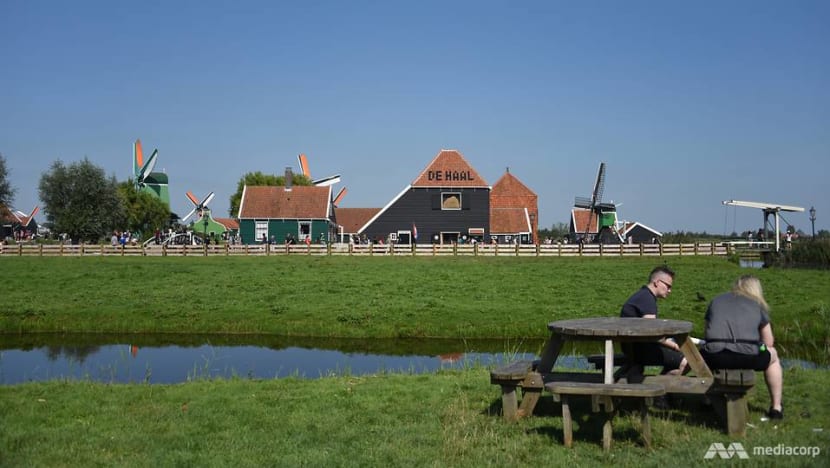
READ: Tides of change - Palau calls on ‘big brothers and sisters’ in the global effort against climate change
READ: Tides of change - As fish and coral disappear, Palau faces the economic realities of climate change
With scientists having predicted that sea levels will rise by about one metre by the end of this century, Minister van Nieuwenhuizen said the Netherlands is “already protected” against that scenario.
“But we, of course, follow closely new reports from the Intergovernmental Panel on Climate Change (IPCC) and see if we have to take measures for even higher sea level rises beyond 1 metre.”
Work is already under way, with the establishment of a Delta Fund. This sets aside about 1 billion euros a year for necessary works to protect the country against flooding, and ensuring the country adapts to climate change and has adequate freshwater supplies.
The Delta Programme, which the fund supports, updates its plans every year and presents them to parliament, said the minister.
“Every year, the parliament takes a good look at what we plan to do for the next year. They also evaluate ongoing and finished projects.
READ: Tides of change - Rising sea levels threaten homes on pristine paradise of Palau
“But this is a specific fund to make sure there is a steady flow (of money) to build and plan for the long term, and that we don’t have to fight for budget every year,” Minister van Nieuwenhuizen told CNA.
“That is a lot of money but that is also the reason why everyone can live here fearless.”
Dykes across the country are already being monitored, with works being done to the “more vulnerable ones”, said the minister.
Massive storm surge barriers are also being improved. After in operations for more than 30 years, the massive Oosterscheldekering underwent a renovation to add new protective layers to its gates.
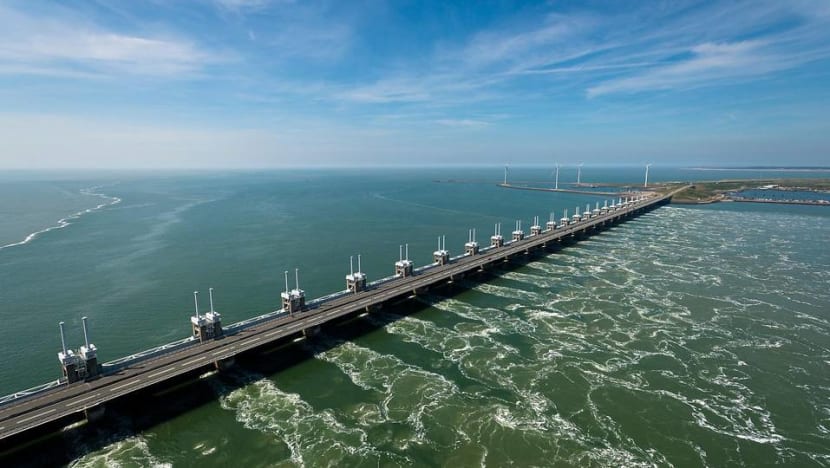
Beyond government-led initiatives, some individuals and private companies have started turning to building on water as a possible solution.
“Sea levels are rising, rainfall is increasing and here we are, trapped in the delta. If we want to continue building and expanding, the best way is to do it on the water,” said Dutch engineer Peter van Wingerden who started the country’s first dairy farm in Rotterdam.
“We are also creating polders with our floating models,” he said. “This is the new polder that is climate-adaptive and little maintenance needed.”
More than six decades may have passed since the 1953 flood disaster, but its legacy remains strong. The Netherlands remains dedicated to ensuring that whatever nature has in store, its people and its infrastructure will be as ready as possible.
As Minister van Nieuwenhuizen said: “For the Dutch people, it’s in their DNA to work and live with water.”














